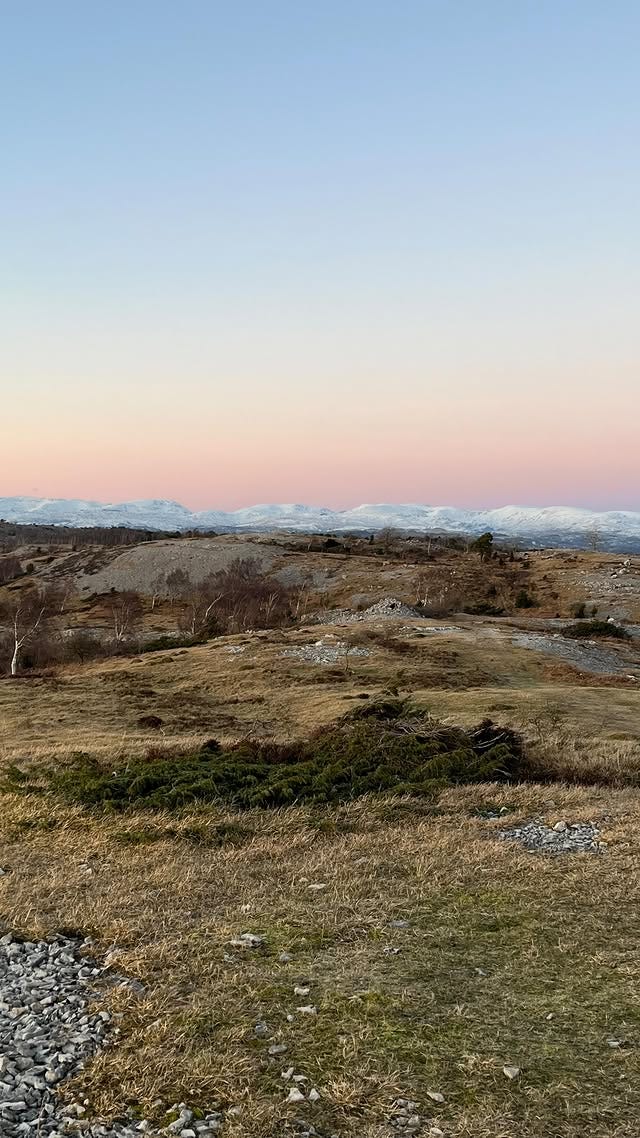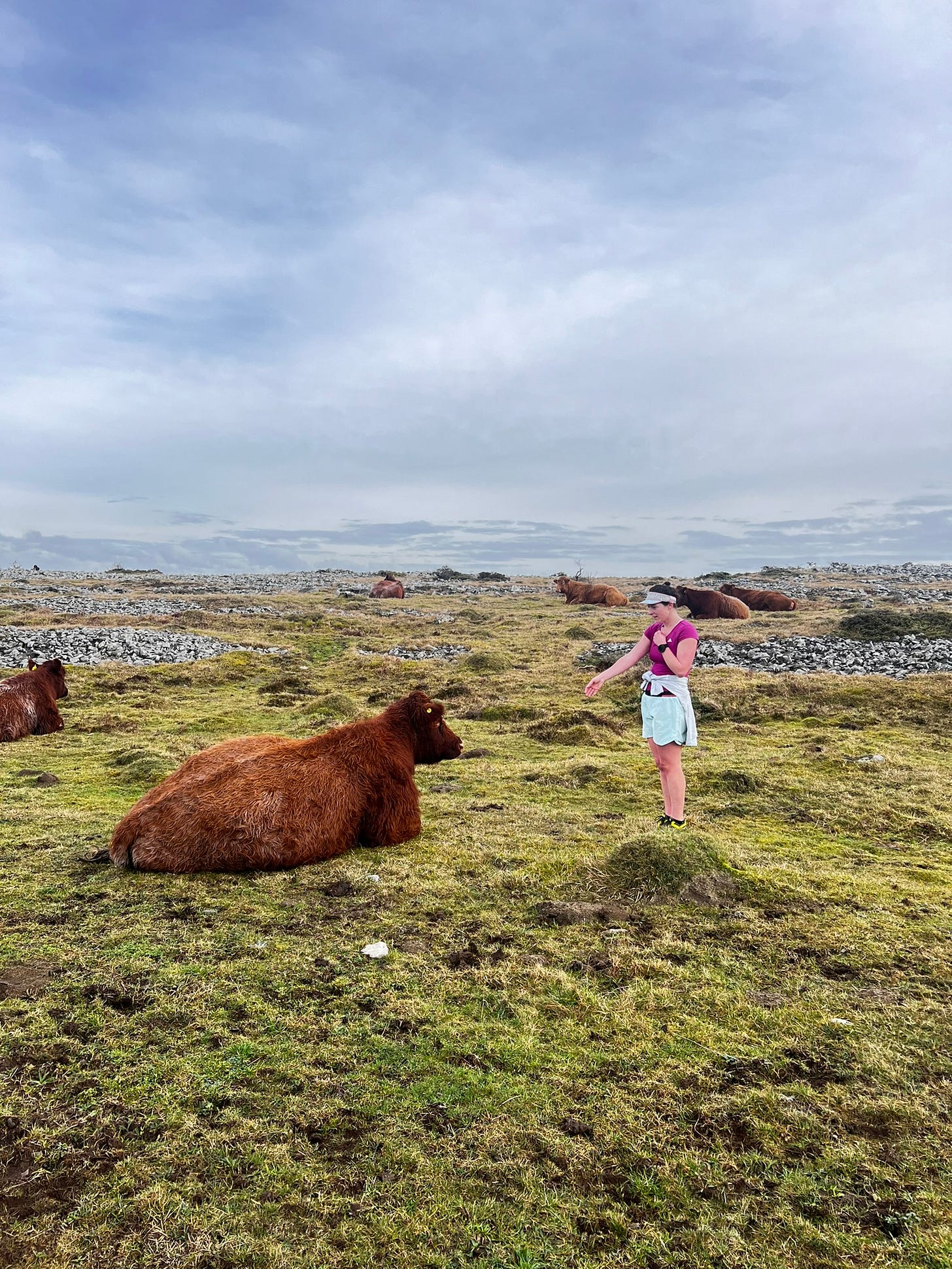When running in the dark you would think you’d see less, and notice fewer details because you only have a small patch illuminated by the head torch, but is it the other way around?
That is when I remember to charge the head torch. I have been known to run in the dark once the batteries have gone after half a mile.
It’s probably true for familiar routes. Recently, on Whitbarrow Scar at night - a route I’ve done maybe 100 times - I noticed more details than in the daytime when I usually go. Maybe I don’t pay enough attention in the daytime because I could do that route with my eyes shut … or could I?
I vary the route, but I know where the key points are - the flow of the path, the junctions, the walls, the gates, the summit marker, the slippy limestone sections, the bit where you have to duck because the needles on the fern tree hang low. But the dark can play tricks on your mind, and the seasonal differences change the features.
In summer, brambles and ferns take over the paths making them seem narrower than usual. In winter, trees come down in storms either blocking the way or removing distinctive objects; thinned-out leaves show light between the trees.
Did I remember it differently, or is that gate further away than usual? I never noticed three piles of stones before the wall. I remember this path being gravelly, not muddy, there’s a junction around here somewhere.
How long do you follow your instincts for before you consult a map, a phone or a GPS watch? Does it depend on your confidence, listening to your gut, or time available?
I don’t get lost often, but when I find myself off-track it feels like a nice gauge of how in tune I am with my senses. I have a decent inbuilt compass that has rarely failed me, but a compass doesn’t cover the ground details.
One time, I did get misplaced up there in the dark because I ignored my instincts. My gut feeling told me it was the next right, but I overrode the feeling with, ‘no it must be further on, I’ve not gone far enough before the turn off’.
The next warning sign was going downhill on what was supposed to be a flat section. It was still in the right direction, and my instincts were right all along, I did miss the turn-off.
What are you supposed to do when you get lost? Re-trace your steps.
Since I had only just overshot the junction, I thought if I just diagonally cut through the woods, I’d be back on track. However, I could see only a few metres ahead and as I went along, the woods became thicker and thicker until I was just in a mess of hedges, brambles and limestone crags.
Deep into the hedge, I had committed to the diagonal line, so there was no point in turning back. Eventually, I reached the path which was exactly how I remembered it and fortunately, nobody witnessed my comical mishap.
Will anyone notice on Strava, I thought.
Straight-lining is rarely the easiest route because it often involves the hardest terrain. I am often short on time - squeezing it in before work - and underestimate how long fell runs will take, so I do a lot of straight-lining because it’s “quicker” in my mind, despite many similar predicaments stuck in bushes, trees, bogs or unintended scree shoots.
“It’s all part of the fun”, I tell other people as they groan at me while thinking that the definition of madness is doing something over and over and expecting a different result.
Being in the dark makes you rely on your senses more. We absorb the surroundings differently than in daylight. Everything is heightened, including the occasional feeling of not being alone, which is most likely a cow, sheep, or dog walker, senses are rarely wrong.
Nighttime does allow you to spot the things you might miss in the sea of details in daylight, and it’s a good time to remember to trust them (and buy a new head torch).
At worst, instincts could save you, at best, they make you feel stupid for ignoring them … over and over again.
(Check out the video of the rare snow-topped mountains. It doesn’t look like that often in Cumbria.)
Recommendations:
Things I’ve read/ listened/ watched that stuck with me or got me thinking…
What does performance really mean for most of us? -
When Running 250 Miles Is the Easy Part - The New York Times
24hr track ultras: “If there’s one thing we’ve got in common it’s that we’re all weird” - BBC Sport
Afghanistan cycling evacuation: The women who started a cycling revolution - A stunning long read about brave women in Afghanistan by Bicycling
How close is your endurance pace & sprint pace - are you a Bobby Finke or Pan Zhanle? - Outdoor Swimmer
I was sent a press release for Women’s Run Series - International Women’s Day 2025, Saturday 8th March - new for 2025 with additional locations to follow. The series is committed to “mark a bold step forward in the journey of women’s running and aims to be a catalyst for change with an emphasis on safety, inclusivity, and community.”
Believing in long-term success is vital when facing brutal setbacks - Business Leader
Studmarks Podcast by Christopher Goldie. A podcast about fell running and the impact of Walsh shoes
- by Julia Audrain - The lives and journeys of female trail runners, with some great athletes
- - A historical podcast on Cumbria & round-up of news in the county.







